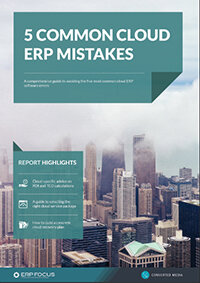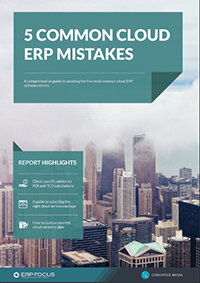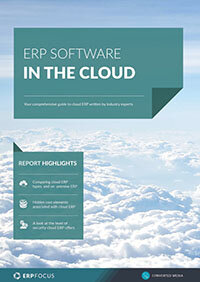How to boost your cloud ERP security this year
2016 is finally spooling down, and it’s been quite an experience. This is particularly true when it comes to major data breaches ranging from hits on governmental agencies, major enterprise hacks, negative impacts regarding to the IoT, and hybrid-socialized networks like Yahoo. In the midst of all of this clamor, calls for deeper and more robust cloud ERP security have emerged, since it’s obvious that enterprise players are moving toward cloud, and away from on-premise operations, by the ton not the thimble-full.
Consequently, we thought we’d try to give you a sense of the future state of security in and around cloud-world, by offering some of the projected threats and what you can potentially do about it next year.
Incident monitoring
As one might expect, cloud ERP security concepts associated with active monitoring are going to be necessarily critical elements going forward. This suggests that the most obvious response will be to ensure that any breaches can be identified early on, but also, apply various automated toolsets that lend themselves to not only stopping a hack in its tracks, but also index, and push a threat completely out of a network environment in real-time.
While this sounds like a reasonably simple approach in theory, challenges exist in the case of potentially overly-filtered data activities, which can create larger performance slowdowns and create more difficulties than they’re worth.
Incident response
In context of the previous bit of information, actual responses to threat vectors will have to be both ‘smart’ and lightning fast. This suggests that network providers are planning to leverage whatever automation comes to the fore, particularly since today’s generation of automated toolsets are already being rolled out including major providers such as Amazon, and HP.
These kinds of system offer intrinsic levels of automation, and enhanced further when they are supported by DevOps-derived configurators like Docker, Puppet, and Chef. However, while great opportunity exists, great risk applies as well, since threat vectors are getting ‘smarter’ which in turn means that any automated system will have to respond in an equally ‘smart’ way forcing yet another tendency toward over-burdening the baseline network.
Enhanced pattern recognition
Following on to avoid overly-burdened and limiting cloud ERP security systems, one of the workarounds to this pure automation solution involves the enhancement of various pattern recognition utilities that can identify likely threats before they get a foothold. These kinds of processes can leveraged as micro or macro process solutions, depending on the particular enterprise need.
Behavior response
Finally, in the same way that pattern recognition applies, threat behavior can also be identified, indexed and stored accordingly, then integrated within one or more utilities that observe, orient, decide and act automatically in order to kill threats before they can cause a full breech. These capabilities also readily lend themselves to various code links and hooks that are intrinsic to most of today’s public networks or systems configurators.
However, note that all of these security helpmates apply at direct user development level or in concert with public network providers, who together, create meaningful solutions for all involved.
Free white paper

Five common cloud ERP mistakes
Get your comprehensive guide to avoiding the five most common cloud ERP errors

Featured white papers
-

Five common cloud ERP mistakes
Get your comprehensive guide to avoiding the five most common cloud ERP errors
Download -

Related articles
-

Why you shouldn't underestimate cloud ERP consultant costs
Make sure to take the cost of a consultant into account when planning your cloud ERP budget
-

Secret KPI: Why Your ERP Implementation Team Matters More Than Software
Learn how Godlan ensures successful ERP implementation for manufacturers with proven strategies &...
-

Five quick actions to improve internal ERP security
Give your internal ERP security a boost with these quick, actionable tips

